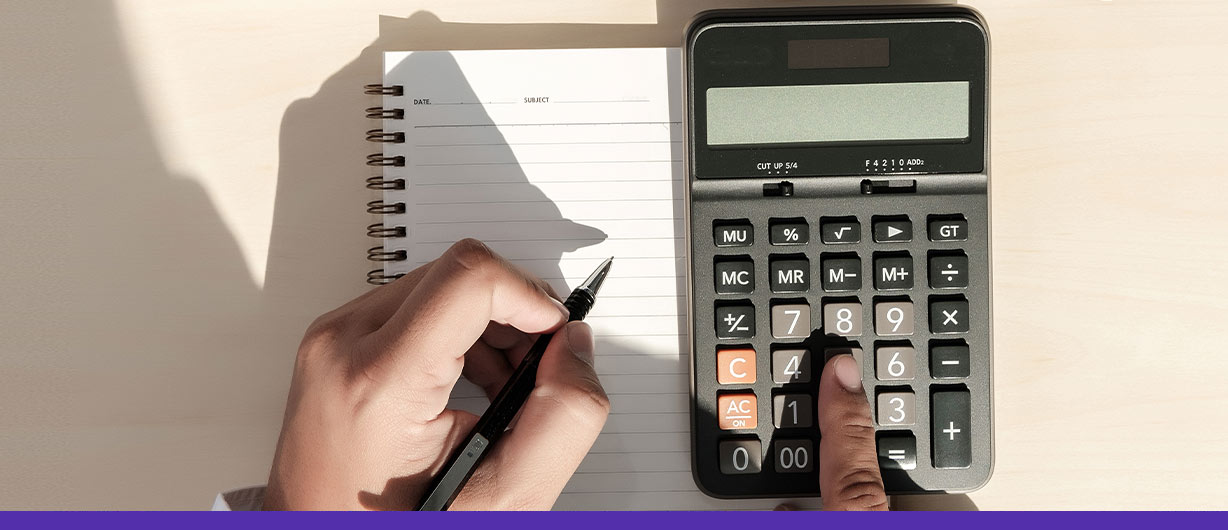September 7 2023 | By Wajiha Danish | 6 minutes Read

Understanding Depreciation and Its Varieties
1. Straight-Line Method
2. Double Declining Balance Method
3. Units of Production Method
4. Sum of the Year’s Digits Method
The sum of the Year’s Digits Depreciation Model Explained:
Considering Economic Utility
How it Operates
The sum of Years’ Digits Depreciation Method Formula
Depreciation factor Formula
Example and Calculation of Sum of Years’ Digits Depreciation
Step 1: Calculate Depreciable Amount
Step 2: Find the Sum of Useful Life
Benefits of Sum of Years’ Digits Depreciation Method
When to Apply Sum of Years’ Digits Depreciation
Journal Entries for Sum of Years’ Digits Depreciation
Endnote
Companies acquire physical resources and tangible assets to enhance their business value. Examples include vehicles, machinery, cash, inventory, equipment, and land. These assets have a finite lifespan during which they degrade. Companies must gauge this degradation and compute asset values as it influences their operations. This assessment process is termed “depreciation.” This article delves into the specifics of the “Sum of the Year’s Digits” depreciation method.
The following methods are widely employed to compute depreciation:
This straightforward approach evenly distributes depreciation across an asset’s useful life. The formula deducts salvage value from the asset cost and divides it by the asset’s lifespan.
An accelerated method that doubles the depreciation rate of the declining balance method, resulting in higher early-year depreciation.
This method calculates depreciation based on the asset’s production output rather than time-based usage.
A technique that frontloads higher depreciation in the initial years of asset use. This accelerated method considers the sum of years in the asset’s life.
Also known as the “sum of years method,” this model rapidly reduces an asset’s value. It permits larger deductions in the asset’s early years and smaller deductions in later years, emphasizing the asset’s economic utility rather than time of use. It computes depreciation expenses based on an asset’s useful life years.
This method aligns the cost of asset utilization with its overall economic usefulness across its lifespan. A significant advantage is that it acknowledges the asset’s declining performance over time, emphasizing higher depreciation in its productive early years. This approach accommodates higher early-year depreciation to counterbalance later years’ maintenance and repair costs.
The sum of years method summarizes the digits for each year of an asset’s anticipated life to determine total depreciation expense. For instance, with a 5-year asset life, the sum is 5+4+3+2+1 = 15.
Each number is then divided by this sum to derive the percentage depreciation for each year. This approach calculates the annual depreciation rate by considering the remaining years of useful life divided by the sum of the remaining years in each subsequent year.
An asset’s productivity is highest in its early years and gradually decreases over time. This approach results in higher depreciation charges during the initial years.
To calculate it:
Steps for Applying Sum of Years’ Digits Depreciation
Step 1: Determine the depreciable amount by subtracting the salvage value from the total asset cost. Depreciable amount = asset cost – salvage value.
Step 2: Find the sum of the useful years.
Step 3: Calculate the depreciation factor for each year.
useful life/ sum of useful years.
Step 4: Compute the depreciation for each year using the formula: (Number of useful years/totals of useful years) * depreciable amount.
Step 5: Let’s consider a 4-year useful life. The sum of useful years = 4+3+2+1= 10. The factors for each year would be 4/10, 3/10, 2/10, and 1/10 for years 1 through 4.
For a clearer grasp, refer to the example in the following section.
Imagine ABC Technologies bought computers worth $4,000,000. We were assuming a 5-year useful life and a salvage value of $100,000, with $200,000 in transportation expenses. We’ll apply the Sum of Years’ Digits formula step by step.
Total asset cost = asset cost + transportation cost
= $4,000,000 + $200,000
= $4,200,000
Salvage Value = $100,000
Useful life = 5 years
Depreciable amount = Total Cost – Salvage Value
= $4,200,000 – $100,000
= $4,100,000
Sum of useful life = 5+4+3+2+1 = 15
Step 3: Compute Depreciation Factors
The depreciation factors are:
Step 4: Calculate Depreciation for Each Year
Depreciation for the first year = $4,000,000 x 5/15
= $1,333,333
Remaining to be depreciated = $4,100,000 – $1,333,333 = $2,766,667
Similarly, calculate depreciation for years 2, 3, and 4.
In the 5th year, depreciated the remaining amount, which is $366,668.
As seen from the example, initial years have the highest depreciation, gradually decreasing until obsolescence.
Note that the final depreciation equals the salvage value.
Advantages:
1. Aligns asset cost with yearly usage across its useful life, particularly beneficial for assets most productive in early years.
2. Balances depreciation with other costs like maintenance, avoiding calculation issues.
3. Acts as a tax advantage; reporting higher initial depreciation lowers net income and tax liability.
4. Suits accelerated depreciation, maintaining earnings stability when assets peak early.
5. Accepted by accounting standards like GAAP and IFRS for tax purposes.
Drawbacks:
1. Early years’ higher depreciation lowers profits.
2. May indirectly impact cash flows.
While all depreciation methods yield the same result, the timing of recognition varies. The sum of Years’ Digits is recommended when quick depreciation recognition is required. This method suits assets like cars, computers, and phones that rapidly become obsolete due to technological advancements.
In our example, there are five entries annually. The company debits depreciation expense and credits accumulated depreciation. Accumulated depreciation offsets the asset’s value, showing net asset worth in the balance sheet.
Depreciation is a technique used to evaluate an asset’s value reduction over its useful lifespan. When assets are utilized over their anticipated lifespan, they experience a decline due to various factors such as consistent use or obsolescence. Depreciation is employed for tangible assets, encompassing physical possessions that companies obtain to enhance productivity and overall business performance. Contrarily, intangible assets undergo amortization, like depreciation, but tailored to the unique attributes of such assets. Calculating depreciation expenses holds significance for accurate accounting records. Monily provides accounting and financial solutions to all size of businesses. If you are looking to simplify your company finances, contact one of our experts today or book a free consultation at https://monily.com/mfccalendly.
Also Read: A Simple Guide To Double Declining Balance Depreciation Method
Subscribe for business tips, tax updates, financial fundamentals and more.
MORE BLOGS

If you’re a small business, we will absolutely get it if you say you’re having a hard time choosing a payment platform for your company. And […]
Learn More →
When it comes to accounting, businesses often face a confusing question: which accounting method should we adopt? The choice typically boils down to the cash basis […]
Learn More →
Driving for Uber or delivering with Uber Eats can be a flexible and rewarding way to earn money. But when tax season rolls around, many drivers […]
Learn More →